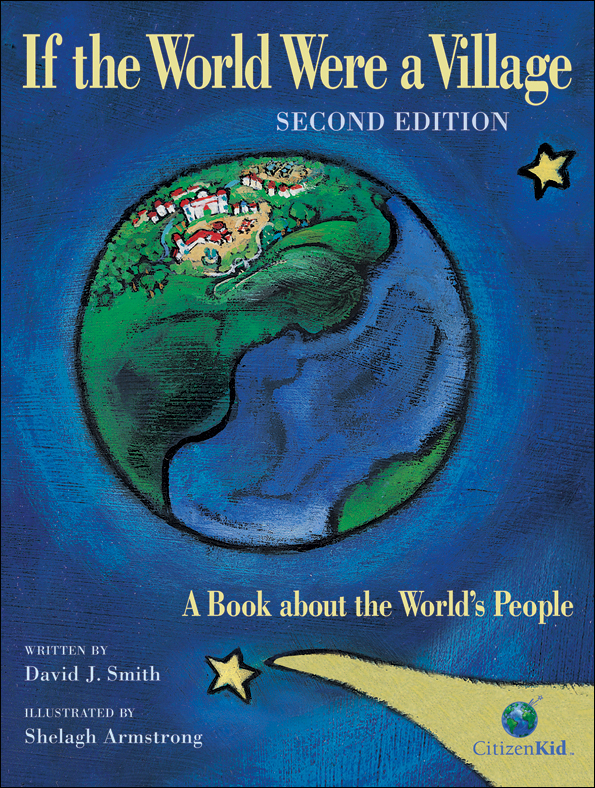11 Feb / If the World Were a Village: A Book about the World’s People by David J. Smith, illustrated by Shelagh Armstrong

 ‘Global village’ is one of those overused phrases we hear so often we don’t actively think about the meaning anymore … but what if you had actual faces, descriptions, numbers, and other important details to better understand who actually lives in that global village?
‘Global village’ is one of those overused phrases we hear so often we don’t actively think about the meaning anymore … but what if you had actual faces, descriptions, numbers, and other important details to better understand who actually lives in that global village?
Thanks to award-winning educational consultant David J. Smith and the vivid illustrations created by his three-book collaborator Shelagh Armstrong, that village-in-a-digestible-snapshot was first published in 2002. Now updated with data gathered through 2010, this second edition offers an even more incisive worldly experience. Combined with the team’s other two titles – If America Were a Village and This Child, Every Child – the trilogy provides a highly accessible, inclusive overview of today’s world for readers of just about any age. Every library – personal or public – should have all three.
As of 2010, the world is home to 6.9 billion people. “Number this big are hard to understand,” so Smith creates an imaginary village of just 100 inhabitants, with each person representing 69 million out in the real world. So who lives here? Unlike here at home in the United States, in the global village, I’m actually not a minority: of the 100, 61 are from Asia, 14 from Africa. 11 from Europe, 8 from South and Central America and the Caribbean, 5 are from the U.S. and Canada, and just one from Oceania which encompasses Australia, New Zealand and the islands of the south, west, and central Pacific. Imagine that!
Of the almost-6,000 languages spoken throughout the world, 21 of our villagers speak a Chinese dialect while 9 speak English. More than half of the population are under 30 years of age. A third of the population is Christian, 21 are Muslim, 15 are non-religious, and only one is Jewish.
Even though the village has enough food for everyone, it’s not divided equally which means 30 people are hungry some or all of the time, and 17 more are severely undernourished and always hungry. Water is also a problem with 13 people who don’t have access to safe water, 38 who don’t have access to adequate sanitation, and 32 who are forced to breathe unhealthy air.
Among the 36 villagers of school age (5-24), 6 children aren’t getting an education because they are forced to work (some even as child soldiers!). Of the 63 employable adults, 6 can’t find jobs while 5 are in school. The richest 10 people hold 85% of the world’s wealth, while the poorest 10 live on less than $2 a day!
Today’s newborns can expect to live to be 68 – a huge increase from age 38 in 1850 and 49 in 1900. Living longer means our population continues to grow: in 1000 BCE, only one person lived in our global village, 8 people in 1500, 32 in 1900, and 100 in our 2010 model. By 2150, our village could number 250 people!
“This book is about ‘world-mindedness,’ which is an attitude, an approach to life,” writes Smith. “It is the sense that our planet is actually a village, and we share this small, precious village with our neighbors. Knowing who our neighbors are, where they live, and how they live, will help us live in peace.” We humans seem to need all the help we can get … let Smith’s insights get us a few steps closer to lasting peace …
Tidbit: To learn more about David Smith and his books, including a short video of David speaking specifically about this title in Convent Garden, London, click here.
Readers: All
Published: 2002, 2011 (second edition)
